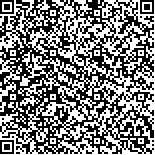本文已被:浏览 114次 下载 22次
投稿时间:2024-11-22 网络发布日期:2025-06-20
投稿时间:2024-11-22 网络发布日期:2025-06-20
中文摘要: 目的 对比乳腺癌根治术中应用羟考酮和芬太尼在术后镇痛效果、辅助性T细胞(Th)免疫平衡及不良反应上的区别。方法 选择2021年12月至2024年1月120例在上海市公共卫生临床中心择期行乳腺癌根治术的女性患者为研究对象,随机数字表法将其分为观察组(羟考酮组)和对照组(芬太尼组),每组各60例。两组均行静吸复合全身麻醉,麻醉诱导开始时,观察组静脉注射盐酸羟考酮 0.1 mg/kg,对照组静脉注射枸橼酸芬太尼1.0 μg/kg,两组术中均使用瑞芬太尼进行维持。分别于术后 1、6、12、24、48 h 记录两组患者视觉模拟评分(VAS)、Th1、Th2水平,双重差分模型分析两组VAS评分,对Th1、Th2、Th1/Th2进行重复测量方差分析,五分位法分析Th1/Th2比值与术后疼痛发生风险之间的关联,对两组患者不良反应进行log?binomial回归分析。结果 (1)两患者术后VAS评分均随时间的延长(1 h→6 h→12 h→24 h→48 h)而递降(P<0.05),且术后各时点观察组VAS评分均低于对照组(P<0.05)。(2)双重差分模型分析显示,VAS评分在组别、时间、组别×时间交互项中差异均有统计学意义(P<0.01)。(3)两组患者术后的 Th1/Th2 比值在组内效应分析(时间因素)均有增加,观察组在术后1、6、12、24、48 h 时,Th1/Th2 比值显著优于对照组(组间主效应分析),随时间延长有显著优于对照组的趋势(组间×时间交互作用)。(4)Logistic 回归模型分析显示,不同 Th1/Th2 水平与患者术后疼痛存在独立相关性(P<0.01)。(5)与对照组比较,观察组患者综合不良反应的风险显著降低(RR=0.342,95%CI:0.146~0.783,P<0.05)。结论 乳腺癌根治术中使用羟考酮相较于芬太尼,可增强术后镇痛效果,促进Th1/Th2免疫平衡,降低不良反应的发生率。
Abstract:Objective To compare the effects of oxycodone and fentanyl on postoperative pain relief,immune balance of T-helper cells(Th),and adverse reactions in radical mastectomy. Methods A total of 120 female patients whounderwent elective radical mastectomy at Shanghai Public Health Clinical Center between December 2021 and January2024 were selected for this study. They were randomly divided into two groups using a random number table:the observation group(oxycodone group)and the control group(fentanyl group),with 60 patients in each group. The combined intravenous-inhalation general anesthesia were performed in both groups. During anesthesia induction,the observation group received an intravenous injection of oxycodone hydrochloride(0.1 mg/kg),and the control group received an intravenous injection of fentanyl citrate(1.0 μg/kg). Both groups received remifentanil for maintenance during surgery. Postoperative visual analog scale(VAS)scores,Th1 and Th2 levels were recorded at 1,6,12,24,and 48 hours post-surgery. Differences in VAS scores between the groups were analyzed using a difference -in-differences(DID)model,and repeated measurement ANOVA was used for Th1,Th2,and Th1/Th2 levels. A quintile group analysis was performed to explore the relationship between Th1/Th2 levels and the risk of postoperative pain. Adverse reactions in both groups were analyzed using log-binomial regression. Results (1)The postoperative VAS scores of both groups decreased with the prolongation of time(1 h→6 h→12 h→24 h→48 h)(P<0.05),and the VAS score of the observation group was lower than that of the control group at each time point after operation(P<0.05).(2)The results of the DID model analysis showed significant differences in VAS scores based on group,time,and the group × time interaction(P<0.01).(3)The postoperative Th1/Th2 ratio of the two groups increased in the intra-group effect analysis(time factor). The observation group had a significantly better Th1/Th2 ratio at 1,6,12,24,and 48 hours post-surgery compared to the control group(inter-group principal effect analysis). The Th1/Th2 ratio continued to show a significant improvement in the observation group over time compared to the control group (inter-group × time interaction).(4)Logistic regression analysis revealed that different Th1/Th2 levels were independently associated with postoperative pain(P<0.01).(5)Compared to the control group,the observation group had a significantly lower risk of overall adverse reactions(RR=0.342,95%CI:0.146-0.783,P<0.05). Conclusion The use of oxycodone during radical mastectomy can enhance postoperative analgesia,promote Th1/Th2 immune balance,and reduce the incidence of adverse reactions compared to fentanyl.
keywords: Oxycodone Subanesthetic dose,single Postoperative pain T ⁃ helper cell 1/T ⁃ helper cell 2 Immune balance Radical mastectomy
文章编号: 中图分类号:R614 文献标志码:A
基金项目:
附件
| Author Name | Affiliation |
| QU Na,ZHAO Xiaohong,NI Qiang | Department of Anesthesiology,Shanghai Public Health Clinical Center,Shanghai 201508,China |
引用文本:
曲纳, 赵晓红, 倪强.单次亚麻醉剂量羟考酮对乳腺癌根治术后患者疼痛及Th1/Th2平衡的影响[J].中国临床研究,2025,38(6):875-879,889.
曲纳, 赵晓红, 倪强.单次亚麻醉剂量羟考酮对乳腺癌根治术后患者疼痛及Th1/Th2平衡的影响[J].中国临床研究,2025,38(6):875-879,889.
